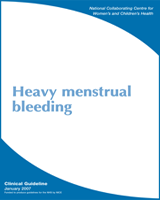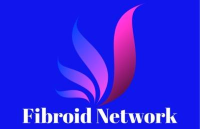
The NHS NICE (National Institue for Clinical Excellence) Heavy Menstrual bleeding guideline (HMB) Guideline – CG44 was published in 2007. The HMB Patient Guide to Treating Heavy Periods is available for FREE download here:
CLICK HERE TO VIEW The Patients Guide to Treatments
You can read & search the FULL HMB Guideline HERE
CLICK HERE for the FREE DOWNLOAD of the full , Evidence based 2007 UK Heavy Menstrual Bleeding (HMB) GUIDELINE for Patients & NHS Healthcare Providers: with full research & evidence on treating Heavy Periods including recommended Drug Treatments & Surgery with or without Fibroids Published January 2007 . Please note that this Guideline is being reviewed with a current target date of March 2016, particularly in respect of medical Treatments for Fibroids.
HMB Guideline Updates:
The Guideline wishes practitioners & patients to be aware that ‘Oral progestogen (norethisterone)which was previously recommended , is not licensed for use as a contraceptive, but may affect a woman’s ability to become pregnant while it is being taken. This is one of a number of treatments , due for review. Please see website
Patient Feedback Post 2007 HMB Guideline
From a patients perspective, we would also want an urgent NHS review of all medical & surgical treatments, including Hormonal Contraceptives & Mirena , which are now being used as treatment for Menorrhagia & Fibroids. We have received Patient feedback, that Women with Fibroids are not being given full informed choice of treatments available , including Uterine Fibroid Embolisation & Myomectomy in situations where it is recommended in the guideline.
Women have told us that they are only being offered Medical treatments or Hysterectomy. They have also stated that they have not been given written information about their Menorrhagia (Heavy Periods) or Fibroids, and the full rage of options available, to assist in their decision making. They have also not been advised of the Risks & benefits of the Medical Treatments & Hormonal Contraceptives offered. And they have not been told that if they have relief from symptoms, using medical treatments, the relief only lasts as long as the medical treatment is being taken & the symptoms are likely to resume if medical treatment is discontinued.
We have also had feedback that even where further fertility is not desired by a woman, Doctors are not considering some patients desires , not to be given a premature surgical menopause by having a Hysterectomy (Womb Removal). Continue reading


